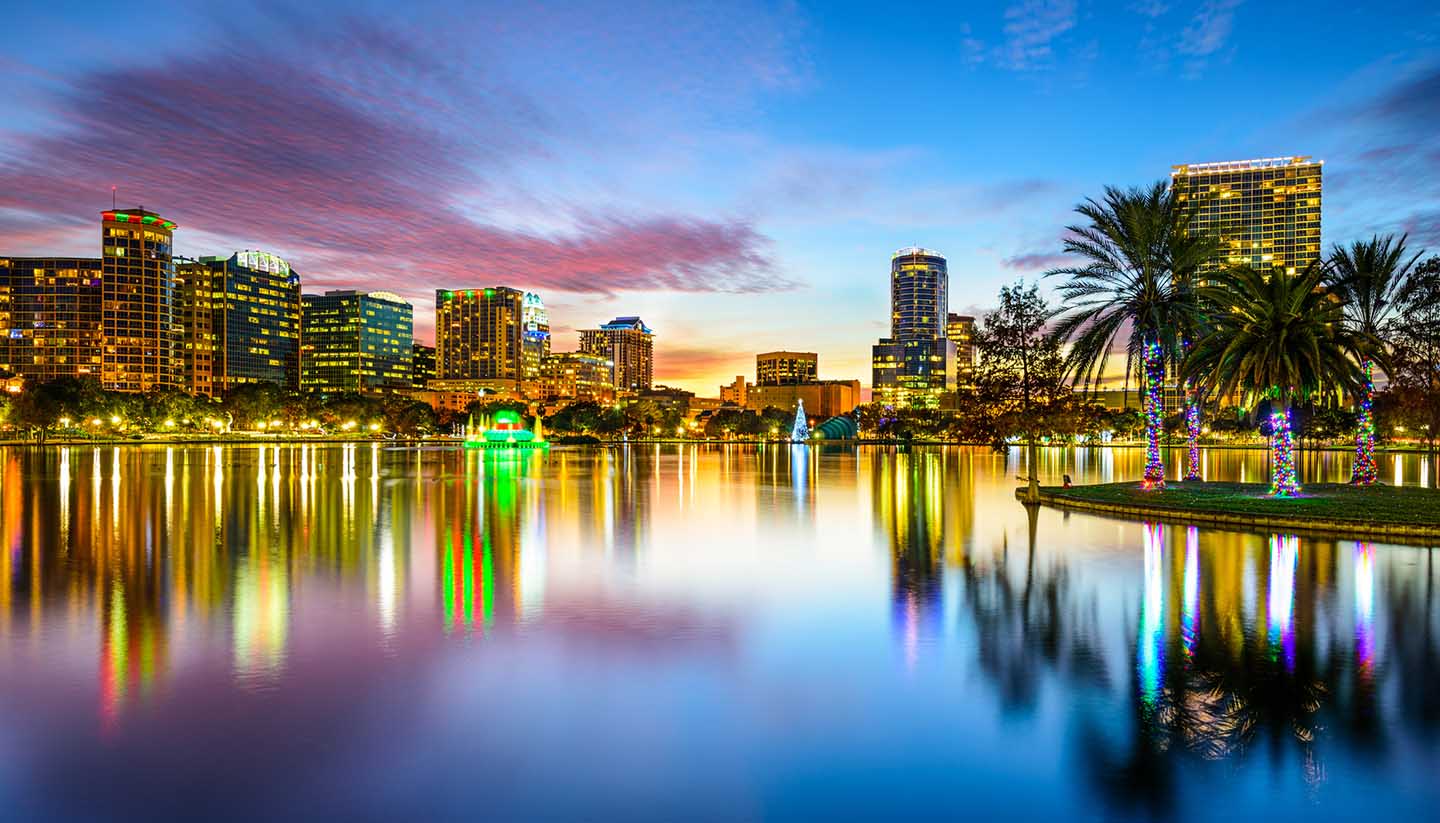Orlando History
Orlando was originally named Jernigan after early settler Aaron Jernigan, who travelled down from Georgia and established the location in 1843. The city grew relatively slowly around the abandoned Fort Gatlin, an old army post erected during the Seminole Wars.
The town's name was permanently changed to Orlando in 1857. The city is thought to be named after Orlando Reeve, a sentinel who was felled by arrows and buried on the south side of Lake Eola after having saved his unit guarding the camp.
The area was heavily farmed into the early 20th century, first with cattle, then cotton and finally orange groves during the ‘Orange Fever’ period of the late 19th century.
The Florida land boom of the 1920s saw extensive development and Orlando enjoyed minor success as a middle-class resort. Although the boom was short-lived, the city’s tourism reputation was consolidated with the opening of Cypress Gardens in 1936.
Cypress Gardens was opened as a botanical garden, but quickly became a major attraction, known for its waterskiing. It remained open through until 2009, when it closed and was reopened as LEGOLAND Florida Resort.
Success as a tourism destination was assured in 1965, when Walt Disney announced plans to build a theme park there, ahead of Miami and Tampa. After opening the resort in 1971, there was an explosion of housing and hotels, and tourism quickly spurned further development.
The rise in theme parks and resorts became exponential, and the city now has the most theme parks and attractions in the world.
More recently, a burgeoning central business district, or financial district, is changing the city’s skyline, and enterprise outside of tourism (e.g. information technology and financial services) is being widely encouraged. However, for now, it is the theme parks that continue to encourage millions of tourists to visit each year.
Did you know?
• Orlando’s first settler, Aaron Jernigan, was arrested on murder charges and escaped jail twice.
• The huge Floral Clock situated in Leu Gardens was actually imported from Scotland in 1966.
• In 1884, a huge fire destroyed much of Downtown Orlando, including The Orange County Reporter newspaper plant.


